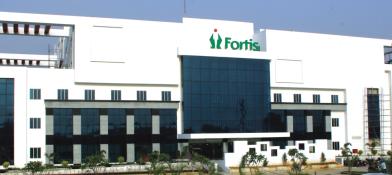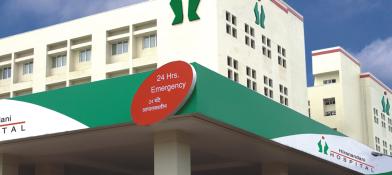Bone Marrow Biopsy and Aspiration
What is Bone Marrow Examination
Bone marrow examination is a medical diagnostic procedure to diagnose cancer and various hematological and nonhematological disorders. or detailed analysis bone marrow aspiration and bone marrow biopsies are periodically used in both inpatient and outpatient settings. The examination enables involvement of technically experienced interprofessional team to manage patients undergoing the procedure.
Distinguishing between Bone Marrow Biopsy and Bone Marrow Aspiration
The composition of bone marrow has both solid and liquid portions, bone marrow biopsy is used to extract solid part whereas bone marrow aspiration is used to extract the liquid part. Bone marrow biopsy is a slow procedure which involves removal of 1 or 2cm solid bone marrow tissue from inside the bone. Bone marrow aspiration involves drawing the liquid bone marrow into the syringe which is comparatively faster than biopsy but does not represent all the cells. The sample drawn for aspiration is processed to further analysis for molecular genetics and flow cytometric studies.
Bone marrow aspiration typically provides great cytomorphological information that helps hematopathologists identify aberrant hematopoietic cells or non-native cells. On the other hand, a bone marrow trephine biopsy provides a more realistic image of the cellularity of the marrow and makes it possible to clearly identify infiltration since it shows the topographic organization of hematopoietic cells within the marrow framework.
Indications
Healthcare providers recommend both the biopsy examination for the following conditions:
Leukemia: Bone marrow biopsies are performed on a regular basis to check for different types of leukemia. This process assists in ascertaining if there are any blood cells that are abnormal or cancerous in nature contained within the marrow thereby aiding medical providers determine precisely what might be afflicting individuals as well as coming up with most suitable remedy solutions.
Lymphoma: Bone marrow biopsies play a role in evaluating certain types of lymphoma. The procedure helps determine if lymphoma cells have infiltrated the bone marrow, providing valuable information for staging and guiding treatment decisions.
Multiple myeloma: To diagnose multiple myeloma, a cancer of plasma cells and stage the condition accordingly and determining the prognosis requires biopsy test.
Unexplained Anemia: Anemia causes can be detected using other means. However, biopsies are done to see if there is unexplained anemia that has no reason for happening otherwise help doctors analyze cells that make up blood detecting any significant deviations from normal situation helps identify what has caused it.
Myelodysplastic Syndromes (MDS): This condition is developed from abnormal production of blood cells, where a bone marrow biopsy is advised for its diagnosis. The test should establish any changes within the marrow such as abnormal cell morphology or low cell counts that assist in diagnosing and classifying MDS.
Neonatal aneuploidy: It a rare genetic disorder with the presence of abnormal chromosomal number. When suspected such cases are referred to bone marrow biopsies to confirm the diagnosis. Biopsy aids in identifying chromosomal abnormalities by direct examination of the bone marrow cells.
The procedure is also recommended to determine parasitic and fungal disorders such as leishmaniasis, cryptococcus and histoplasmosis.
Request for Bone Marrow Sample:
The physician might request a bone marrow sample for the following purposes:
Assess or identify a medical condition: A bone marrow biopsy or aspiration may be recommended by your healthcare professional if a blood sample shows an unusually high concentration of blood cells. They can diagnose blood diseases, cancer, infections, and other illnesses with the use of a biopsy.
Cancer stage: The stage of cancer indicates how far along it has gone. If your cancer has progressed to your bone marrow, a bone marrow biopsy can reveal this. It can reveal whether bone marrow malignancy is expanding.
Track the effectiveness of the treatment: The examination could be done by your doctor to assess the efficacy of your treatment.
Procedure Details
A bone marrow aspiration and biopsy examination are done at hospital or clinical settings. The procedure is carried out by specialized doctors such as hematologists and oncologists. With appropriate training nurses or clinical technicians are also involved in the procedure.
Site: Bone marrow biopsy is performed on the back of hipbone however this type of biopsy is never performed on breastbone due to risk of lung or heart injury. Unlike biopsy, aspiration can be performed on breastbone, hip bone and shinbone site (only in infants).
Induction of Anesthesia: To lessen discomfort at the site of the needle insertion, a local anesthesia such as lidocaine or procaine is injected. Short-term discomfort from the anesthetic process itself may coexist with pain from the procedure's injury to the marrow, which cannot be sedated. The experience varies; some individuals report no discomfort at expected times, while others describe pain at varying intensities. However, in some cases patients may be pretreated with suitable analgesics or pain killers to avoid intense pain post procedure.
Aspiration procedure: At the initial step the aspiration needle is gently inserted through the skin by applying manual pressure it is forced till it reaches the bone. Following this the clinician’s hand performs twisting motion to penetrate the needle through the outer layer of the bone reaching the bone marrow cavity. A syringe connected to the needle extracts the liquid bone marrow inside the marrow cavity.
Biopsy procedure: A trephine needle is introduced into the bony cortex. By twisting and rotating the needle is spread to obtain a solid fragment of bone marrow.
Post procedure: After completion of procedure the patient is made to lie in supine position for 5-10 min. If no bleeding occurs at the procedure site, the patient can resume normal activities. However, patients may be prescribed with analgesics to ease the post procedure discomfort and pain. Additionally, patients are instructed to refrain from washing the operation site for at least 24 hours following the conclusion of the surgery.
Recovery: Recovery following procedure is typically quick, taking a day to a week. Since only a minor skin cut is made, no stitches are needed, just a bandage is put on.
Complications
Pain and mild soreness are the possible side effects though severe complications are rare. Research identifies some of them:
- Hemorrhage or Bleeding
- Persistent pain
- Infection
Contraindications
The bone marrow examination is contraindicated in the following conditions:
- Bleeding disorders
- Thrombocytopenia
Conclusion
Bone marrow Examination is an essential and efficient tool in diagnosing and evaluating hematological and non-hematological disorders. Complete evaluation of bone marrow samples includes a brief patient history, hematological profile, bone marrow aspirations, smears, and biopsy sections. Bone marrow aspiration and biopsy were correlated, indicating that they were complimentary procedures. Bone marrow examinations can be made safer and less risky when carried out by qualified medical professionals.
































